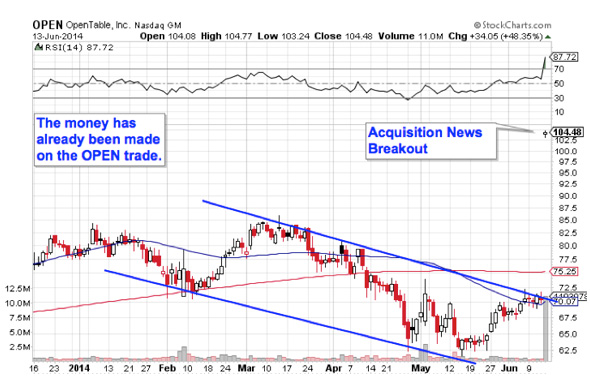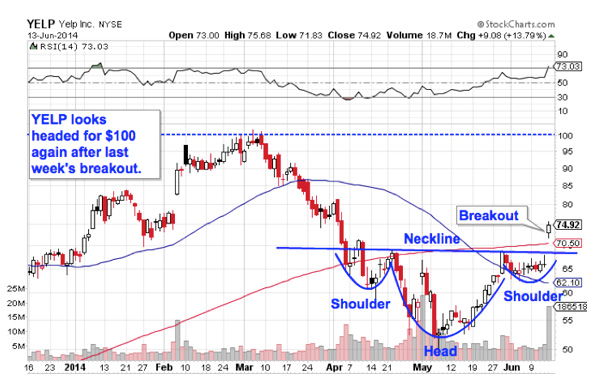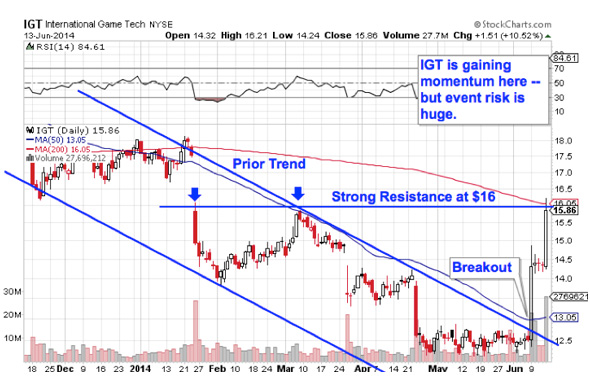There have been a lot of rumors and a lot of alleged leaks about a higher-end Samsung (SSNLF) Galaxy S5 hitting the market soon. This version, dubbed the Galaxy S5 Prime, is said to sport 3GB of RAM (up from 2GB in the current S5) and a quad-HD (2560x1440) display, up from 1920x1080 on the pain S5. It is also said to sport either a next-generation Exynos processor coupled with an Intel XMM 7260 modem ora Qualcomm (QCOM) Snapdragon 805 paired presumably with the latest MDM9x35 modem from Qualcomm.
What are the odds that this model even exists? We very recently saw news of the LG G3's 2560x1440 display hit the Web over the last week or so, and given that LG is probably going to play up this feature, Samsung is also likely to want to be able to keep up in the smartphone "resolution wars." Interestingly enough, though, the LG G3 will apparently sport a 5.5-inch 2560x1440 panel. If the rumors around Samsung's phone are correct, the S5 Prime should offer even higher pixel density at the same resolution on a 5.1-inch display.
That being said, such a phone is likely to be extremely expensive to make. Samsung already launched the Galaxy S5 (which had a larger screen than the S4, faster/likely more expensive processor, and other enhanced goodies) for about $100 less than the Galaxy S4 debuted at. This means if the company wants to preserve its margins here, it will either need to sell the purported S5 Prime for significantly more than the current S5, or the S5 Prime won't really sport these BoM-cost-ballooning features.
Should Apple worry? The big question then is whether Apple (AAPL) -- which has been on an absolute roll with its iPhone products lately -- has anything to be worried about vis-a-vis an even higher end, premium-tier Galaxy S5. While Samsung would handily win the "spec wars" with three times the RAM and a much sharper display, it's important to note that Apple's key differentiation point isn't necessarily the hardware, but the harmony of the hardware and the software.
For customers who prefer the ease of use of iOS, there is simply no alternative to Apple, and mainstream customers who are "used to" iOS have a rich library of iOS apps and are also probably hooked into iTunes won't switch to a Samsung/Android phone. It is this differentiation via software (which is R&D intensive but very COGS-friendly) that helps Apple not only maintain its share of the high end, but also allows it to do so with fantasticprofitability.
Conclusion Samsung, LG, and the hordes of Android vendors can bring in the flashiest displays and biggest "on-paper" specifications, but for many users, iOS and the ecosystem that surround it are what make Apple's phones worth the premium, not necessarily the hardware. Any company can buy an obscenely expensive, high-resolution panel and put a ton of RAM in its phones, but not any company can build the ecosystem, the brand, and the customer loyalty that Apple has.
| Currently 0.00/512345 Rating: 0.0/5 (0 votes) | |

Subscribe via Email

Subscribe RSS Comments Please leave your comment:
More GuruFocus Links
| Latest Guru Picks | Value Strategies |
| Warren Buffett Portfolio | Ben Graham Net-Net |
| Real Time Picks | Buffett-Munger Screener |
| Aggregated Portfolio | Undervalued Predictable |
| ETFs, Options | Low P/S Companies |
| Insider Trends | 10-Year Financials |
| 52-Week Lows | Interactive Charts |
| Model Portfolios | DCF Calculator |
RSS Feed  | Monthly Newsletters |
| The All-In-One Screener | Portfolio Tracking Tool |

MORE GURUFOCUS LINKS
| Latest Guru Picks | Value Strategies |
| Warren Buffett Portfolio | Ben Graham Net-Net |
| Real Time Picks | Buffett-Munger Screener |
| Aggregated Portfolio | Undervalued Predictable |
| ETFs, Options | Low P/S Companies |
| Insider Trends | 10-Year Financials |
| 52-Week Lows | Interactive Charts |
| Model Portfolios | DCF Calculator |
RSS Feed  | Monthly Newsletters |
| The All-In-One Screener | Portfolio Tracking Tool |
AAPL STOCK PRICE CHART

90.91 (1y: +58%) $(function(){var seriesOptions=[],yAxisOptions=[],name='AAPL',display='';Highcharts.setOptions({global:{useUTC:true}});var d=new Date();$current_day=d.getDay();if($current_day==5||$current_day==0||$current_day==6){day=4;}else{day=7;} seriesOptions[0]={id:name,animation:false,color:'#4572A7',lineWidth:1,name:name.toUpperCase()+' stock price',threshold:null,data:[[1372050000000,57.506],[1372136400000,57.519],[1372222800000,56.867],[1372309200000,56.254],[1372395600000,56.647],[1372654800000,58.46],[1372741200000,59.784],[1372827600000,60.114],[1373000400000,59.631],[1373259600000,59.293],[1373346000000,60.336],[1373432400000,60.104],[1373518800000,61.041],[1373605200000,60.93],[1373864400000,61.063],[1373950800000,61.456],[1374037200000,61.473],[1374123600000,61.68],[1374210000000,60.707],[1374469200000,60.901],[1374555600000,59.856],[1374642000000,62.93],[1374728400000,62.643],[1374814800000,62.999],[1375074000000,63.97],[1375160400000,64.76],[1375246800000,64.647],[1375333200000,65.239],[1375419600000,66.077],[1375678800000,67.064],[1375765200000,66.464],[1375851600000,66.426],[1375938000000,65.859],[1376024400000,64.921],[1376283600000,66.766],[1376370000000,69.939],[1376456400000,71.214],[1376542800000,71.13],[1376629200000,71.761],[1376888400000,72.534],[1376974800000,71.581],[1377061200000,71.766],[1377147600000,71.851],[1377234000000,71.574],[1377493200000,71.853],[1377579600000,69.799],[1377666000000,70.128],[1377752400000,70.243],[1377838800000,69.602],[1378184400000,69.797],[1378270800000,71.242],[1378357200000,70.753],[1378443600000,71.174],[1378702800000,72.31],[1378789200000,70.663],[1378875600000,66.816],[1378962000000,67.527],[1379048400000,66.414],[1379307600000,64.303],[1379394000000,65.046],[1379480400000,66.383],[1379566800000,67.471],[1379653200000,66.773],[1379912400000,70.091],[1379998800000,69.871],[1380085200000,68.79],[1380171600000,69.46],[1380258000000,68.964],[1380517200000,68.107],[1380603600000,69.709],[1380690000000,69.937],[1380776400000,69.059],[1380862800000,69.004],[1381122000000,69.679],[1381208400000,68.706],[1381294800000,69.513],[1381381200000,69.948],[1381467600000,70.402],[1381726800000,70.863],[1381813200000,71.24],[1381899600000,71.588],[1381986000000,72.071],[1382072400000,72.699],[1382331600! 000,74.48],[1382418000000,74.267],[1382504400000,74.994],[1382590800000,75.987],[1382677200000,75.137],[1382936400000,75.697],[1383022800000,73.811],[1383109200000,74.985],[1383195600000,74.672],[1383282000000,74.29],[1383544800000,75.25],[1383631200000,75.064],[1383717600000,74.417],[1383804000000,73.213],[1383890400000,74.366],[1384149600000,74.15],[1384236000000,74.287],[1384322400000,74.376],[1384408800000,75.451],[1384495200000,74.999],[1384754400000,74.09],[1384840800000,74.221],[1384927200000,73.571],[1385013600000,74.448],[1385100000000,74.257],[1385359200000,74.82],[1385445600000,76.2],[1385532000000,77.994],[1385704800000,79.439],[1385964000000,78.747],[1386050400000,80.903],[1386136800000,80.714],[1386223200000,81.129],[1386309600000,80.003],[1386568800000,80.919],[1386655200000,80.793],[1386741600000,80.194],[1386828000000,80.077],[1386914400000,79.204],[1387173600000,79.643],[1387260000000,79.284],[1387346400000,78.681],[1387432800000,77.78],[1387519200000,78.431],[1387778400000,81.441],[1387864800000,81.096],[1388037600000,80.557],[1388124000000,80.013],[1388383200000,79.217],[1388469600000,80.146],[1388642400000,79.019],[13887


